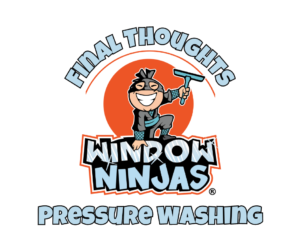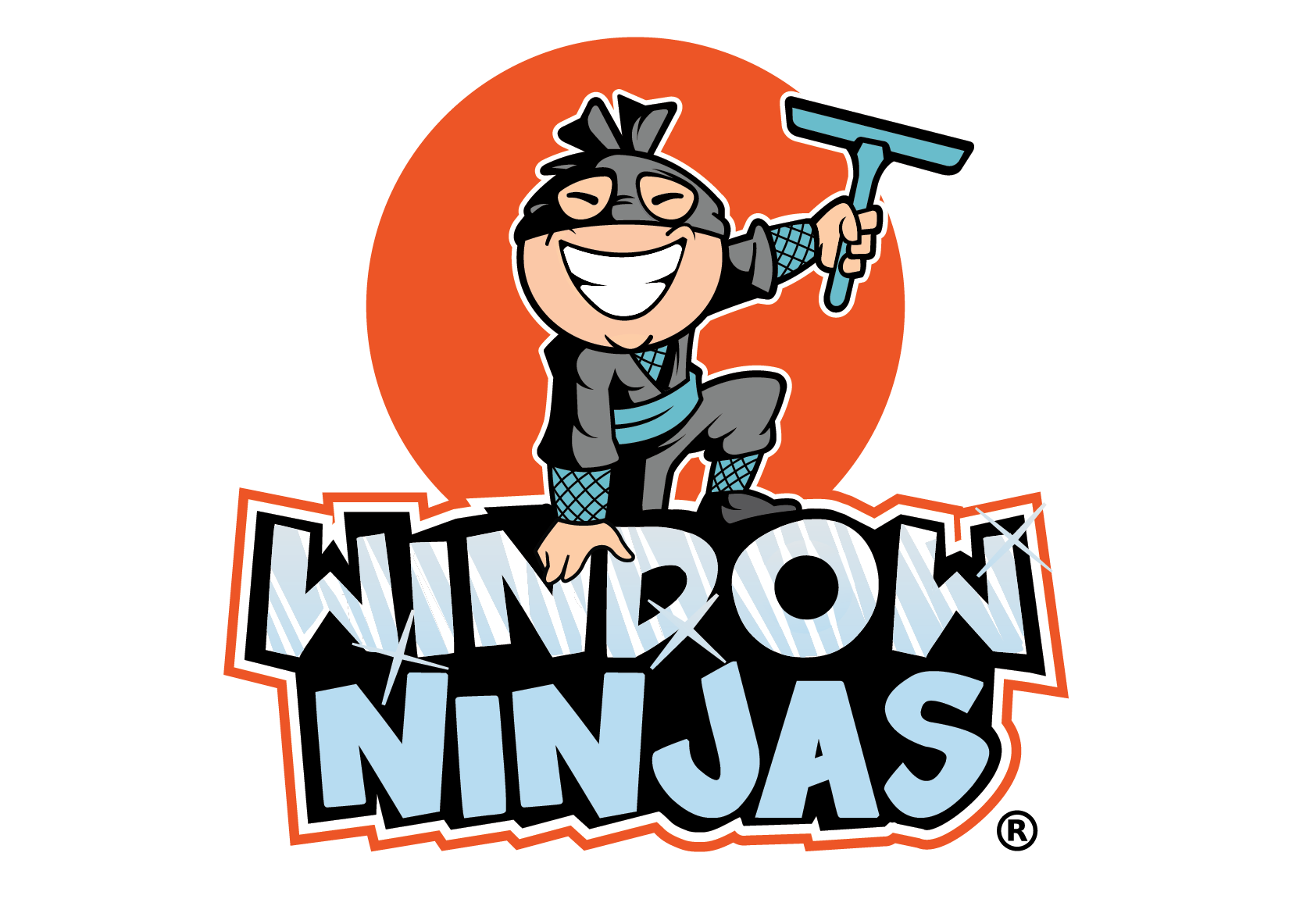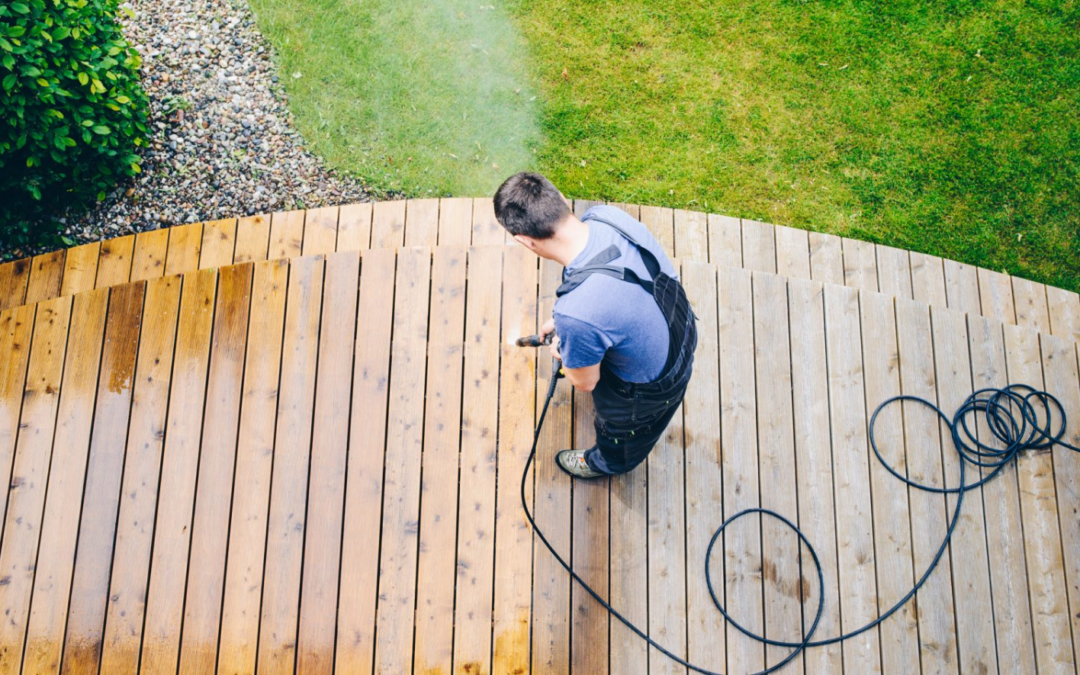Pressure washing can be a highly effective way to restore the look of your home’s exterior, driveways, and decks. However, while it’s tempting to tackle this task yourself, many do-it-yourself (DIY) enthusiasts quickly discover that it’s not as straightforward as it seems. This article from Window Ninjas explores the frequent pitfalls homeowners encounter and provides insights into professional techniques that ensure a safe, efficient, and damage-free cleaning process. Whether you’re looking to avoid streaks, prevent surface damage, or simply achieve a more thorough clean, understanding these common mistakes and how the pros navigate them can save you time, money, and frustration.
If DIY sounds like too much work, we agree! Pressure washing is a laborious process that can have a negative impact on properties if done incorrectly. If you want to guarantee positive results, call Window Ninjas! Contact us today at 833-646-5271 or online at windowninjas.com to schedule your appointment.
The Importance of Pressure Washing
To start us off, let’s first get a basic understanding of why pressure washing is so important. Pressure washing is a crucial maintenance practice for both residential and commercial properties, offering several benefits that extend beyond appearances. Over time, surfaces such as driveways, sidewalks, decks, and building exteriors accumulate dirt, grime, mold, mildew, and other pollutants. These can degrade the surface’s appearance and structural integrity. Pressure washing effectively removes these contaminants, enhancing the curb appeal and value of the property.
Additionally, it helps prevent the buildup of harmful substances that could cause long-term damage or pose health risks to occupants. By regularly pressure washing, property owners can prolong the lifespan of surfaces, reduce repair costs, and create a cleaner, safer environment. This proactive approach not only preserves the investment made in the property but also ensures that it remains inviting and well-maintained, reflecting positively on the owner’s attention to detail and care.
Common DIY Pressure Washing Mistakes
Now that we know the value of pressure washing, it’s time to look at some mistakes well-intentioned but inexperienced property owners make when attempting to pressure wash on their own.
Mistake #1: Using the Wrong Nozzle
One of the most common mistakes in DIY pressure washing is using the wrong nozzle. Pressure washers come with various nozzles, each designed for specific tasks. A narrow-angle nozzle, such as a 0-degree or 15-degree nozzle, produces a concentrated, powerful stream of water that can strip paint or even damage wood and other surfaces if not used correctly. On the other hand, a wider-angle nozzle, like a 40-degree or soap nozzle, disperses water over a broader area, suitable for general cleaning without causing damage. Choosing the wrong nozzle can result in inadequate cleaning or severe surface damage, highlighting the importance of understanding each nozzle’s purpose before starting your project.
Mistake #2: Applying Too Much Pressure
Another frequent error is applying too much pressure. Homeowners often believe that higher pressure will yield better results, but this is not always the case. High pressure can gouge wood, chip paint, and even crack concrete. For example, pressure washing a wooden deck or siding requires a delicate balance to clean effectively without causing harm. Most surfaces around the home can be adequately cleaned with a pressure setting between 1,500 and 2,500 PSI. It’s crucial to start with a lower pressure setting and gradually increase it as needed, always testing on an inconspicuous area first.
Mistake #3: Ignoring Safety Precautions
Safety is paramount when using a pressure washer, yet many DIY enthusiasts overlook basic safety precautions. Pressure washers emit water at high velocities, capable of causing serious injuries. Failing to wear appropriate personal protective equipment (PPE) like gloves, safety goggles, and sturdy footwear can lead to accidents. Additionally, not paying attention to your surroundings can result in slipping on wet surfaces or getting tangled in power cords. Always ensure that you’re wearing the right gear and are aware of your environment to minimize risks.
Mistake #4: Skipping Pre-Cleaning Prep
Rushing into pressure washing without proper preparation can lead to subpar results and potential damage. Before turning on the washer, it’s essential to clear the area of any debris, furniture, and fragile items that could be damaged or become projectiles when hit by the high-pressure stream. Additionally, pre-treating stubborn stains with appropriate cleaning solutions can make the pressure washing process more effective and efficient. Neglecting these steps often results in incomplete cleaning and increases the risk of damage to both the washer and the surfaces being cleaned.
By being mindful of these common mistakes, DIY enthusiasts can achieve professional-level results with their pressure washing projects while safeguarding their equipment and property.
How Professionals Avoid Common Mistakes
We have seen that pressure washing can be an incredibly effective way to clean surfaces, but it does require skill and knowledge to avoid common pitfalls. Professionals in the field follow a set of best practices to ensure they achieve optimal results without damaging property or compromising safety.
Understanding Surface Materials
One of the first steps professionals take is assessing the material of the surface being cleaned. Different materials require different pressure settings and nozzles. For instance, concrete can withstand high pressure, whereas wood and vinyl siding need much gentler spraying to prevent damage. By understanding the specific needs of each surface, professionals can adjust their equipment accordingly. This ensures that the cleaning process is both effective and safe.
Using the Right Equipment
Professionals also prioritize using the right equipment for the job. This includes selecting the appropriate nozzle (typically ranging from 0 to 40 degrees) which determines the angle and intensity of the water spray. A narrower spray is more powerful and should be used cautiously to avoid surface damage. Additionally, professionals often use commercial-grade pressure washers, which are more reliable and efficient than consumer models. Proper maintenance of this equipment is crucial, as well-tuned machines perform better and reduce the risk of mishaps.
Pre-Treatment and Cleaning Agents
Effective pressure washing isn’t solely about water pressure. Professionals often pre-treat surfaces with specialized cleaning agents that help to break down grime and stains. These chemicals must be chosen carefully to avoid harming plants, animals, or the surface itself. Using the right detergent can make the pressure washing process more efficient however. This is because it requires less force and thereby reducing the likelihood of causing damage.
Safety Measures
Safety is another major consideration. Professionals usually wear appropriate protective gear, such as goggles, gloves, and boots, to protect themselves from flying debris and chemical exposure when needed. They also make sure to clear the area of obstacles and bystanders to prevent accidents, including managing the power cord and water hose to minimize tripping hazards. In addition, professionals are trained to handle the recoil of the pressure washer, which can be substantial and pose a risk to untrained users.
Proper Technique
Lastly, technique is key. Professionals use a systematic approach, often starting from the top of the surface and working their way down to avoid streaks and ensure even cleaning. They maintain a consistent distance from the surface, usually around 12 to 18 inches, and move the spray in a steady, sweeping motion. This helps to prevent concentrated pressure on any one spot, which can cause etching or other forms of damage.
By following these best practices, professionals avoid common pressure washing mistakes. This way they can deliver a clean and pristine result without unnecessary risk or damage.
DIY vs. Professional Services: Why You Should Call in the Pros
When considering whether to tackle pressure washing your home yourself or hiring a professional, it’s essential to weigh the benefits and drawbacks of each approach. DIY pressure washing can seem appealing due to the potential cost savings and the satisfaction of completing a task on your own. However, as we discussed this route comes with significant risks and challenges. Without proper training, homeowners may use incorrect pressure settings or cleaning agents. This can potentially result in damaged surfaces such as wood, paint, or even concrete. Additionally, purchasing or renting high-quality pressure washing equipment can be costly, and the learning curve associated with using these machines efficiently can lead to wasted time and subpar results. Safety is another critical concern, as mishandling powerful water jets can lead to personal injury or unintentional harm to others.
On the other hand, hiring professional pressure washing services offers numerous advantages that often justify the expense. Professionals bring experience and expertise, ensuring that the job is done correctly and efficiently. They are well-versed in using the right pressure settings and eco-friendly cleaning solutions for various surfaces, preserving the integrity of your property while delivering superior results. Most importantly, professional services include liability insurance, providing peace of mind against potential damages or accidents. Outsourcing this task allows homeowners to save valuable time and effort. This way they can focus on other important activities or simply enjoy their clean and revitalized surroundings. Ultimately, calling in the pros ensures a thorough, safe, and effective cleaning process that enhances curb appeal and extends the lifespan of your home’s exterior surfaces.
Final Thoughts
In conclusion, while DIY pressure washing can be a cost-effective way to maintain your property’s appearance, it comes with its own set of challenges and risks. Common mistakes can unfortunately lead to costly
Want to ensure your property receives the best results possible? If so, be sure to call Window Ninjas today for all your pressure washing needs! Reach us at 833-646-5271 or visit our website windowninjas.com to begin your journey towards the best property maintenance out there. Want more information on pressure washing? If so, check out our detailed blog post!

